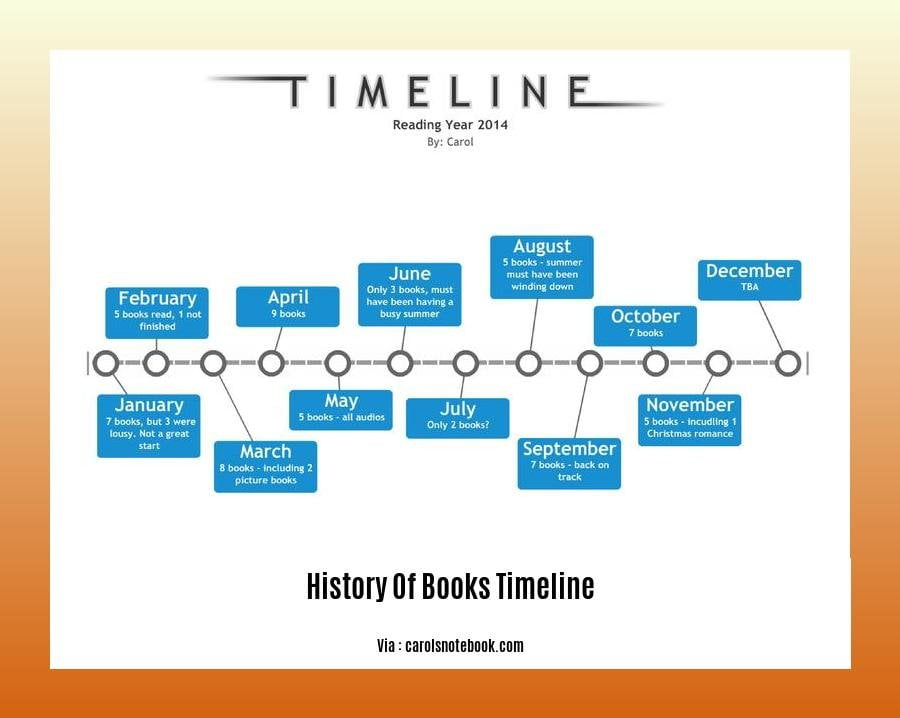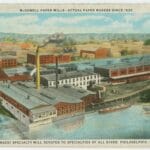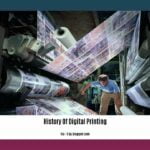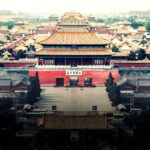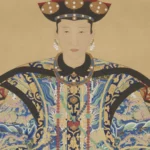Embark on [- A Journey Through Time: The History of Books Timeline], a captivating narrative that traces the extraordinary evolution of books from their humble beginnings as ancient scrolls to the transformative digital age. This chronicle explores the profound impact of paper, printing, and technology on the dissemination of knowledge and the shaping of human civilization.
Key Takeaways:
- Books have seen a remarkable evolution, from ancient scrolls to modern digital formats.
- The earliest known book, the Diamond Sutra, dates back to the Tang Dynasty in China.
- Books have played a pivotal role in the preservation and dissemination of knowledge throughout history.
History Of Books Timeline

Before penning down thoughts was an option, oral tradition and tales carried knowledge through generations. Then, like a bright star in the night sky, the first glimmer of written language emerged on clay tablets and papyrus scrolls.
The Genesis of Books: The Ancient Scroll
Unroll the History Of Books Timeline, and you’ll find the ancient scroll at its inception. Dating back to the 4th millennium BC/BCE, these scrolls, made from animal skin or papyrus, served as the primary medium for recording knowledge and stories. Imagine unfurling these scrolls like a treasure map, revealing a world of wisdom.
The Paper Revolution: A New Chapter Unfolds
Fast forward to the 2nd century BC/BCE, and a game-changer entered the scene: paper. Crafted from plant fibers, paper brought a new level of accessibility to the written word. Lighter and more versatile than scrolls, paper paved the way for the widespread dissemination of ideas.
Gutenberg’s Printing Press: A Transformative Inkwell
In the mid-15th century, Johannes Gutenberg’s printing press revolutionized the History Of Books Timeline. With movable metal type, books became mass-produced, democratizing access to knowledge like never before. The printed book, a marvel of its time, fueled the Renaissance and ignited an explosion of intellectual discourse.
The Digital Age: Books Reimagined
The 21st century brought a new chapter to the History Of Books Timeline: the digital age. E-books and audiobooks transformed the way we consume literature. With the tap of a screen, we can now access vast libraries from the comfort of our homes or on the go. Technology continues to reshape the book, blurring the lines between physical and digital realms.
Timeline of Book Evolution
| Era | Format | Key Features |
|---|---|---|
| Ancient World (4th millennium BC/BCE) | Scrolls | Made from animal skin or papyrus |
| 2nd century BC/BCE | Paper | Lighter, more versatile than scrolls |
| Mid-15th century | Printed books | Movable metal type |
| 21st century | E-books, audiobooks | Digital formats accessible on various devices |
Discover the fascinating journey of the written word through the history of books, from ancient scrolls to modern e-readers.
Delve into the captivating History Of Books And Reading to explore how books have shaped civilizations and ignited imaginations.
Unravel the intriguing History Of Books Of The Bible, tracing their origins, evolution, and profound impact on religious beliefs.
Learn the intriguing History Of Bookshelves, from their humble beginnings to the elaborate designs that safeguard our literary treasures.
Explore the alarming History Of Books Being Banned, highlighting the attempts to silence voices and suppress knowledge throughout history.
Discover the transformative History Of Books Read On Kindle, examining how digital technology is revolutionizing our reading experiences.
Trace the evolution of History Of Bookselling, from ancient book fairs to modern online marketplaces, and witness the enduring power of connecting readers with their beloved books.
The Gutenberg Revolution
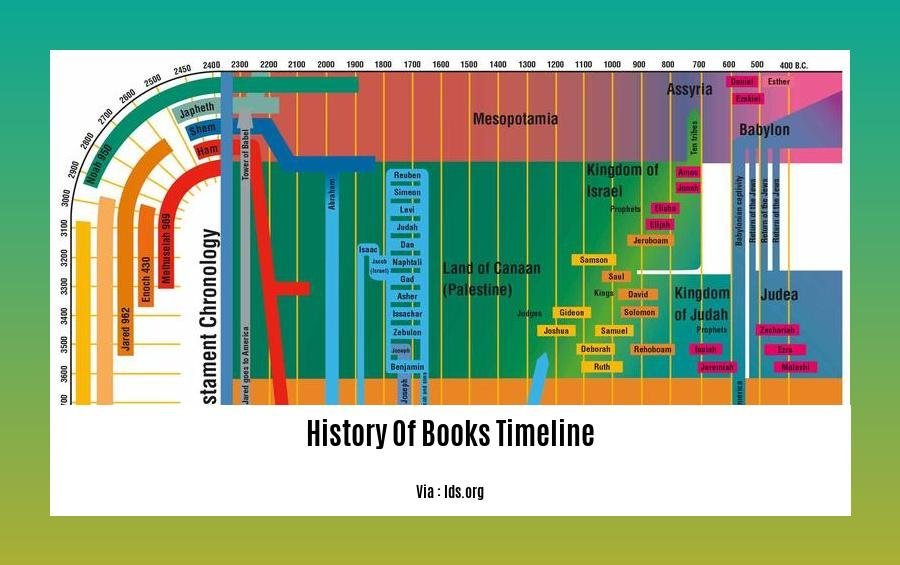
The invention of the printing press by Johannes Gutenberg in the mid-15th century was a watershed moment in the history of knowledge dissemination.
Before The Gutenberg Revolution, books were laboriously handwritten, making them prohibitively expensive and accessible only to the elite. Gutenberg’s movable type system revolutionized the process, allowing for mass production and bringing the transformative power of the written word to the masses.
The impact of The Gutenberg Revolution cannot be overstated:
- Increased Literacy: Broader access to books boosted literacy rates, fostering a more informed society.
- Scientific Advancement: Printed books facilitated the rapid exchange of scientific ideas, leading to groundbreaking discoveries.
- Cultural Exchange: The ability to print multiple copies of works allowed for cultural diffusion, leading to cross-fertilization of ideas.
- Religious Reformation: The printing press played a pivotal role in the spread of Protestant ideas, challenging the authority of the Catholic Church.
Key Takeaways:
- Johannes Gutenberg invented the first known mechanized printing press in Europe in 1455.
- The Gutenberg Revolution revolutionized book production and knowledge dissemination.
- The invention increased literacy rates, fostered scientific advancement, facilitated cultural exchange, and contributed to the Protestant Reformation.
Sources:
- TakeLessons: Online History Tutors
- Johannes Gutenberg – World History Encyclopedia
The Industrial Revolution and Mass Production
When the Industrial Revolution swept across the world in the 18th century, it brought sweeping changes to the way books were produced and disseminated, leading to the era of mass production. Inspired by the innovations of James Hargreaves, Edmund Cartwright, and Richard Arkwright, the development of mechanized machinery revolutionized textile manufacturing.
These groundbreaking inventions, such as the spinning jenny, power loom, and steam-powered textile machinery, laid the groundwork for mass production. Previously crafted by hand in small quantities, books could now be produced at an unprecedented scale, meeting the growing literacy rates and demand for affordable reading materials.
The Industrial Revolution catalyzed the shift from artisanal to factory-based production, transforming bookmaking from a specialized craft to an industrialized process. The proliferation of printed books fostered the spread of ideas, knowledge, and literacy, playing a pivotal role in shaping modern society.
Key Takeaways:
- The Industrial Revolution introduced mechanized machinery, such as spinning jennies, power looms, and steam engines, revolutionizing textile manufacturing.
- Mass production enabled the production of books on a large scale, catering to the growing demand for affordable reading materials.
- The Industrial Revolution shifted bookmaking from a craft to an industrialized process, transforming the production and distribution of knowledge.
Relevant URL Sources:
The Digital Age and E-books
Scanning the Digital Horizon
As the world hurtles into the digital age, the printed page has found a formidable rival in its electronic counterpart: e-books. These digital wonders have transformed the way we access, read, and enjoy literature, ushering in a new era of boundless possibilities.
Early Pioneers
The concept of an electronic book was first envisioned in the 1930s, but it wasn’t until the invention of Project Gutenberg in 1971 that the first e-book was created: the Declaration of Independence. In subsequent decades, technological advancements paved the way for the widespread distribution of e-books.
The Rise of E-readers
The early 2000s witnessed the advent of e-readers, such as the Kindle, which made e-books more portable and accessible than ever before. Suddenly, libraries could carry entire collections in a single device, and readers could indulge in their favorite books anywhere, anytime.
Key Takeaways:
- The Digital Age and E-books: E-books have revolutionized the distribution and accessibility of literature, making it more convenient and portable than ever before.
- Evolution of Technology: Advancements in technology, such as the invention of e-readers, have played a crucial role in the rise of e-books.
- Impact on Libraries: E-books have expanded the reach of libraries, allowing them to carry vast collections in a compact digital format.
Relevant URL Sources:
- The History of eBooks: From 1930 To Today
- A Brief History of eBooks and eReaders
FAQ
Q1: What were the earliest forms of books?
A1:
Ancient scrolls, dating back to the 4th millennium BC/BCE, were the earliest known forms of books.
Q2: Who is credited with inventing the printing press?
A2:
Johannes Gutenberg, a German goldsmith, invented the first known mechanized printing press in Europe in 1455.
Q3: Where and when was the first known book printed?
A3:
The Diamond Sutra, printed in China during the Tang Dynasty around the first century AD/CE, is considered the earliest known book.
Q4: How have books evolved over time?
A4:
Books have evolved from handwritten scrolls to printed pages to modern digital formats, reflecting advancements in technology and the dissemination of knowledge.
Q5: When did ebooks become popular?
A5:
The introduction of e-readers in the early 2000s popularized the use and accessibility of ebooks.
